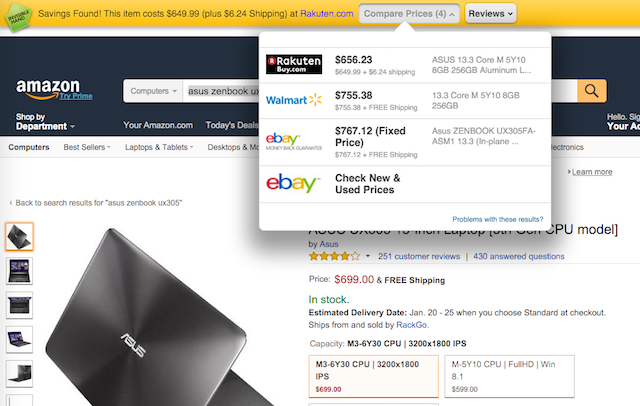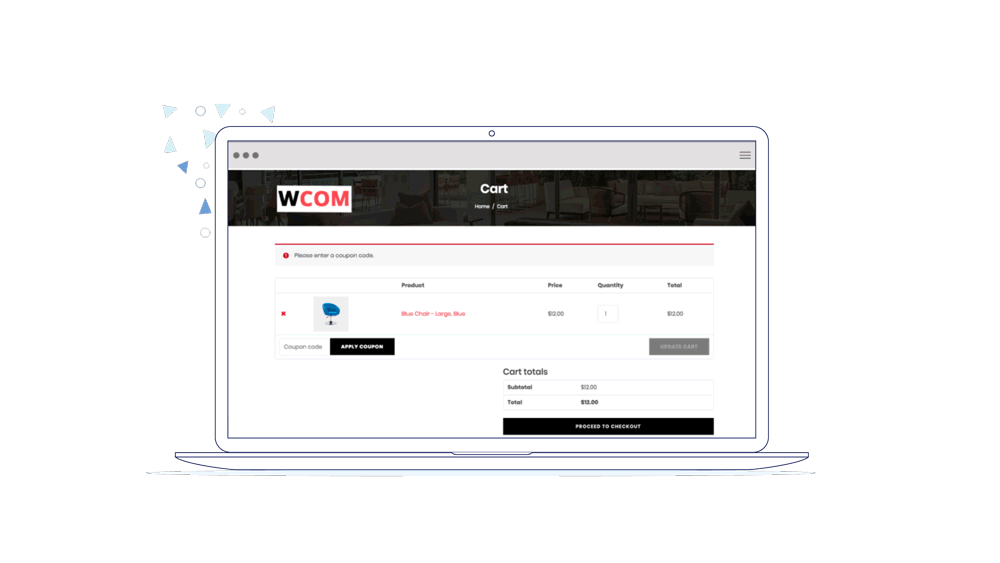When cart abandonment rates are hitting as high as 80%, online retailers are continually looking for ways to optimize their stores and maximize conversions. Be it getting their online store visitors to subscribe to the newsletter, opt-in for push notifications or make a purchase, everyone’s end goal is to trigger interaction in the first visit.
But why is it that despite the continual optimization of product and checkout pages, most online stores seem to be losing a significant chunk of their customers – the number increases year after year?
Because while they know that different customers walk into brick and mortar stores with different expectations, preferences, and purchase behavior, they are not able to map the same psychology in the digital landscape.
So we decided to analyze the most common types of online shoppers that your store is and has been getting all this while.
1. Price-Sensitive Shoppers
These are the most common type of online shoppers. A recent study conducted by Google indicates that the majority of consumers in matured, and developed eCommerce marketplaces tend to be more bargain-savvy. Americans tend to identify themselves as “deal seekers”. Price point is usually the most important purchase consideration followed by free shipping and ‘sale, discount, or promo’ right behind it. They value the dollar more and would sift through tens of sites to get a substantial deal.
To get the best deal, 20% of these shoppers install various price comparison browser extensions like this one here:

Why you can’t convert them
Because simply put, thousands of other sites across the world are offering deals too – some better than yours. And the moment the feeling of them bagging a good discount on another site kicks in, these shoppers abandon your store.
To make things worse, these shoppers have their browsers infected with malicious extensions that behave as price comparison tools. A significant number of coupon extensions are unauthorized by website owners.
These extensions not only charge unfair commission fees when shoppers apply coupon codes but also harm the website’s user experience. Ad injections go undetected when shoppers install browser extensions and display unwanted ads and content on your website. These are often interpreted as signs of an unsecured and untrustworthy website that lead to cart abandonment.
How to convert them
Identify your price-sensitive shoppers by tracking their on-site behavior. For example, take a look at what they do after adding products to their cart. Did they leave your site at least once and then come back to it to try a coupon they found? This is your cue to be the first one to offer them a coupon before they even make the first exit.
Remove ad injections and coupon extensions using adware software that can protect browser-side infections in real-time. Creating an adware-free customer journey ensures a distraction-free environment and keeps shoppers on your website.
Also, keep an eye on online competitor prices and create special offers on your eCommerce website.
2. Experience Shoppers
Remember how you shop from some stores not because of the products or offers they have, but the experience they offer? Yes, there are a lot of other online shoppers who prefer to experience shopping more than anything else. They don’t want to feel like just another customer on your site and seek a personalized, frictionless experience. According to CMO, 73% of consumers are willing to pay more for a better on-site experience.
Why you can’t convert them
Because the slightest little friction between them and the product they want to purchase can make or break your sale. This includes things like the load time of your product pages, product discoverability, and even how quickly they can find the ongoing deals on the products they like. A complicated and long checkout process also diminishes the buying experience. Studies suggest that around 87% of online shoppers abandon their carts during checkout if the process is too long or complicated.
How to convert them
Website Speed: Make sure your site loads quickly, whether on mobile or desktop. If your website loads slowly, people have lots of options and will go elsewhere. Over two-thirds of mobile users in the US use mobiles as their primary access to the internet. Ensure your website is optimized for a mobile-friendly customer experience – from browsing to purchasing to engaging with your brand online.
Search function: Site search is often a neglected function. It provides a quick and easy way to connect shopper intent with the right content. The data from search queries can be used to create a personalized experience.
Easy checkout: There is no such thing as an optimum checkout process. It depends on the demographic, product complexity, price point, and other factors. But there are certain approaches that can help uncomplicate the process – Capture the user’s email directly and give them an option to checkout as a guest or create an account later; Remove the header or footer navigation of the store and remove any distractions so the users focus on the checkout page; Keep the cart page simple and summarize what the user has added.

3. Ready-to-Purchase Shoppers
These are shoppers who want to buy something ‘right away.’ It could be a purchase they make based on trends or simply based on their current needs. They usually reach online stores through a quick Google search (a whopping 36% of them) and convert as quickly on the first store that offers them a great experience. But that also means that if your site is slow, or they can’t find a good discount easily, you’ll end up losing this customer.
Why you can’t convert them
These shoppers are all about how quickly they can make the purchase. If they feel that they can’t find a deal easily on a product webpage, or realize that they will need to complete an additional step to purchase a product like signing up and creating an exhaustive profile on your store, they’d rather skip.
How to convert them
No other way to bag these customers than to offer a frictionless shopping experience. Optimize your checkout process, make deals easily visible to them, provide plenty of payment and shipping options. Offer personalized offers based on on-site shopping behavior to increase the chances of conversions. Don’t leave room for them to feel you wouldn’t be able to deliver an order when they need it the most.
With an immediate need to complete their purchase, online retailers should ensure that the shopping experience is frictionless and efficient. Offer personalized deals that not only satisfy the needs of ready-to-buy shoppers but protect your margins too.
4. Latest Product Shoppers
No matter what the product does or how different it is from the one they own, the latest product shoppers want to remain in the now. So they’re always looking for the latest or the newest product in any category. They are also those who don’t mind switching from one product to another, as long as they get to brag about owning the latest product. You see them commonly in fashion, beauty, and technology industries.
Why you can’t convert them
The biggest problem with these shoppers is that they’re always on the lookout for what’s new in the market. They want to be the first ones to own a product that is popular in their circles. That’s why these shoppers will buy from any store that offers them the first deal and makes it easy for them to complete the purchase. So if they can’t find either of the two on your site, you can bid bye-bye to the sale.
How to convert them
The only way to convert them is to be the first to reach out to them and let them know you’re selling the product they’re interested in. To sweeten the deal, add a discount! But make sure you reach out to them on all possible channels – social media, ads, email, on-site notifications, etc.
5. Research Shoppers
A growing number of consumers extensively research and compare products and offers before making purchases. The number increases in case of a major purchase ($500 or more). 81 percent of consumers research online before visiting a retailer’s online store and spend an average of 79 days gathering information before making a major purchase.
They don’t want to end up making even the smallest of mistakes that result in a return or exchange request. These shoppers tend to have various browser extensions installed on their browsers to make quick comparisons. After all, who likes being hassled right?
Why you can’t convert them
Since these shoppers are all about research, one of their biggest distractions is comparison sites. It is in their nature to search for a ‘versus’ article, look for reviews and ratings, and sift through all the other available options in the market. During this process, they might lose interest in the product altogether or end up discovering a similar product on a competitor brand’s site.
How to convert them
These are shoppers that want to know more about the products before they purchase them. So help them identify their needs better and understand why and how what you’re offering is the best they can get. For instance, if you see them hesitant in completing the purchase, target them with on-site offers or help them using an engagement window or a live chat.
Such shoppers know what they are looking for and visit every product in a category or spend time searching for products of a specific type. Optimize the customer experience by using consistent product information across categories, create buyer guides, and offer comparative product reviews that will help them with research and spend more time on your website. In the past, high-ticket categories such as automotive, electronics, tools and hardware, and wearable tech saw shoppers high online research. But such consumer behavior is evolving and online research is becoming more common for low-ticket categories such as cosmetics, apparel, toys & games, and more.
Each shopper type has distinct characteristics, but there are a few things common amongst them all – being able to get the best product at the best deal and the endless distractions around them.
While some online shoppers are distracted by all the deals available to them on other sites, others are continually looking into chat apps, emails, games, or other distractions. There is no way of telling what’s keeping the shopper from completing a purchase in your store.
But the one thing that you do have in your hands is to ensure that you keep distractions like price comparisons, competitor ads, adult content, third-party pop-ups, and video ads at bay and offer them a frictionless eCommerce experience with timely engagement.
Not sure how you could do both?
Let us show you.







